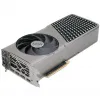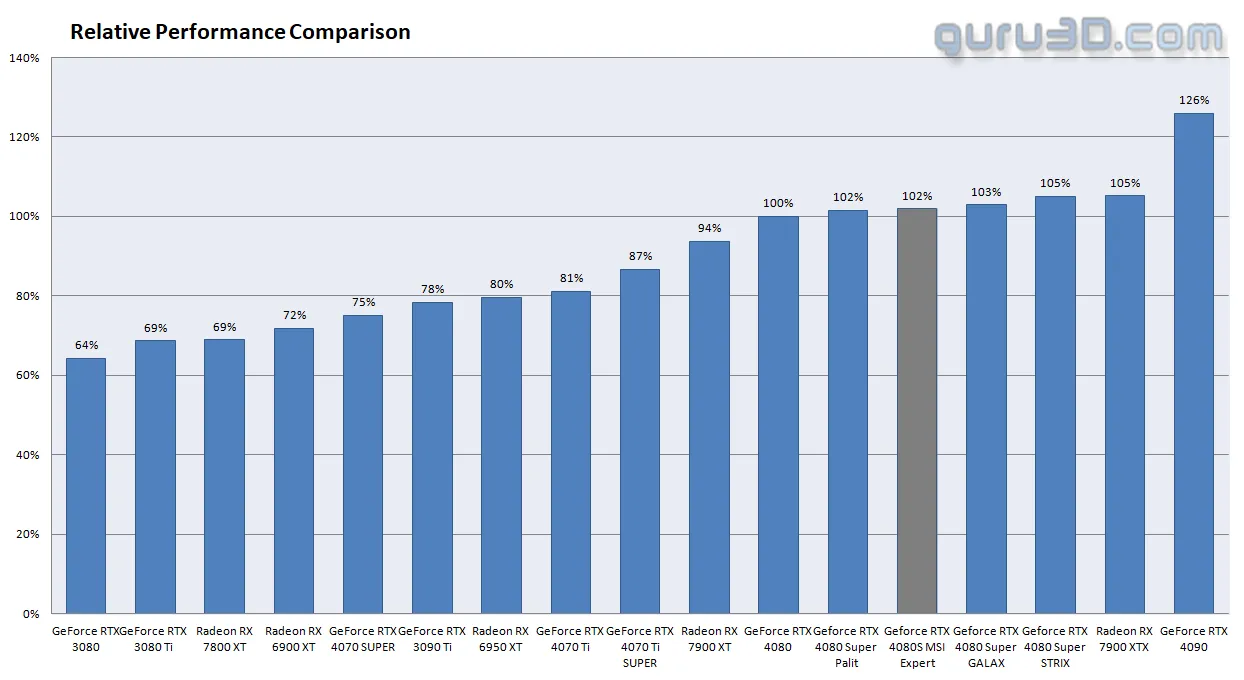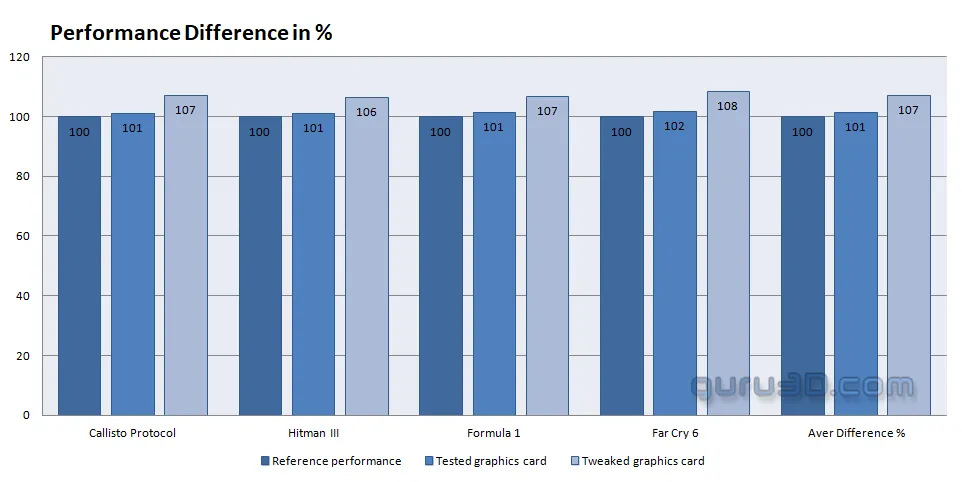Final words and conclusion
The MSI GeForce RTX 4080 Super Expert Graphics Card introduces a near cosmopolitan design in the realm of graphics cards, characterized by its all-aluminium cooling system casing and a champagne-coloured rear reinforcement plate. This construction choice departs from the conventional use of plastic, aiming for a more refined aesthetic. The card integrates an advanced heatsink system designed by MSI at the core of its cooling efficiency. This system employs a push-pull airflow configuration and incorporates vapor chamber technology alongside precision-engineered heatpipes for optimal heat dissipation. While its aluminium die-cast structure mirrors that of Nvidia's RTX 40 Founders Edition GPUs, MSI's version stands out with unique features, including proprietary fan technology that enhances airflow and contributes to the card's sleek design. The card's rear showcases a smoothly contoured backplate, bearing subtle MSI and GeForce RTX branding, presenting a minimalist and elegant design ethos. This contrasts with the often complex and angular designs prevalent in the graphics card market, providing a visually understated option. Thermal management is a key focus, with vapor chamber technology and heat pipes efficiently transferring heat from the GPU core to the heatsink. The inclusion of two Zero Frozr fans, configured in a push-pull setup, aligns with NVIDIA's Founders Edition card designs, promoting effective thermal regulation. Distinctively, the MSI GeForce RTX 4080 Super Expert eschews RGB lighting, prioritizing design simplicity and performance. It utilizes a single 600-W 12V-2×6 connector for power, offering a streamlined alternative to the more common 12VHPWR connections, thus simplifying power delivery to the device.The RTX 4080 SUPER, despite its high performance, faces challenges in the market due to an unfavourable price-performance ratio. We can appreciate that, it also makes the 'older' 4080 abundant, and as such NVIDIA will phase out its sales to be replaced with this SUPER model. Much like the entire 4000 series, the GeForce RTX 4080 also focuses heavily on Deep Learning Super Sampling (DLSS) technology, with upgraded Tensor cores supporting DLSS 3.5. This enhancement is reported to double performance efficiency, and NVIDIA suggests potential future gains of three to four times with optimized game implementations. From a visual perspective, the graphics rendered on monitors are impressive, offering a high-quality visual experience. Another aspect of debate remains the 12VPWR power connector introduced with these cards. While the connector itself is deemed safe, issues (can) arise when bending the cables too near the connector, especially if the cables are of lower quality. This can create potentially hazardous situations. Our recommendation is to bend cables at least 3-4cm away from the connector, ensuring they are securely and tightly plugged in. Our tests, including FLIR imaging assessments, have not revealed any safety issues with the connectors on these cards. And we tested a lot of them by now.
Geforce RTX 4080 SUPER:
- CUDA Cores: 10240
- Memory: 16GB GDDR6X at 23 Gbps
- Total Graphics Power (TGP): 320W
- Power Consumption: Approx. 246W during gameplay, 15W in idle
- Key Features: 4K Full RT gaming, advanced AI capabilities
- Expected Release Date: January 31
Performance
The performance metrics are clear, the GeForce RTX 4080 SUPER stands out, particularly in gaming performance and rendering quality. This card offers better value compared to the 4090, achieving high-level performance that facilitates 4K resolution gaming. It's ideal for enthusiast gamers who use Ultra-Wide HD (UWHD), Quad HD (QHD), or Ultra HD (UHD) monitors. The RTX 4080 features an advanced rasterizer engine that surpasses previous performance limits, thanks in part to its 10k Shading processors. Additionally, the RTX 40 series introduced a new generation of Ray tracing and Tensor cores, which have proven to be significantly more powerful. The core counts of RT and Tensor should not be the sole focus; their performance efficiency is what truly matters. Located near the shader engine, these cores have become more efficient, a fact that is evident in their output. While Tensor cores are often challenging to quantify, our observations indicate robust performance, as evidenced by the impressive results with DLSS3 technology. The GeForce RTX 4080 is versatile, delivering super performance (pardon the pun) at resolutions ranging from 2K (2560x1440) to 4K (3840x2160).
Cooling & noise levels
The cooling design of this GeForce RTX 4080 SUPER is notably efficient. As a high-end gaming product, it naturally consumes a considerable amount of power. On average, a founder edition of the card uses about 280-320 Watts under full load, this one sits a notch higher. This power usage directly correlates to the amount of heat generated by the GPU inside a closed case. In terms of acoustics, the card reaches around 37-38 dBA under intense stress, which is a gradual process as the card slowly heats up. This noise level is measured at performance mode and as such that BIOS modus is not only a notch faster, it's silent as well. Under stress, the GPU temperature can reach approximately 70°C, with variations depending on the airflow within the computer chassis. Thermal imaging tests reveal no alarming issues. However, it's important to note that custom versions of the card from different manufacturers may exhibit higher power consumption due to factors like increased Total Graphics Power (TGP), RGB lighting, and liquid cooling systems.
Energy consumption
We previously mentioned the power consumption of the GeForce RTX 4080 SUPER, which is notably high, especially in the context of rising energy prices. Our measurements indicate that the power draw under intense gaming conditions is around 280-325 Watts. This increased power consumption is the compromise for enhanced performance in this specific model of the graphics card. In typical gaming scenarios, the power usage can vary but often exceeds 275 Watts. It is anticipated that cards from board partners may exhibit even higher power consumption due to increased Total Graphics Power (TGP) allowances.
Coil whine
The presence of coil squeal in any GeForce RTX 4000 graphics card can vary, depending on the degree of the issue. It becomes audible when reaching high framerates, but typically remains at a manageable level. Within an enclosed case, this sound is likely to blend into the background noise. In our experience with this specific card, the coil squeal has been hardly noticeable to us. We really did not notice it.
Pricing
The manufacturer's suggested retail price (MSRP) for the NVIDIA GeForce RTX 4080 SUPER is set at $999. This pricing, although high, presents a significant reduction from the initial $1199, making it more appealing, especially when compared to the cost of current gaming consoles which ideally should be higher. Versions from Add-in Board (AIB) partners, which typically feature enhancements, are expected to command a premium of $50-100 over the MSRP. Despite personal opinions on pricing, the demand for these graphics cards remains strong. Final prices are yet to be confirmed, but a selling price of around 1100 USD / 1200 EUR would not be surprising, albeit considered expensive by some consumers.
Tweaking
MSI allows for a +15% on the power limiter. The clock frequency can be safely increased by approximately +200-240 MHz, resulting in the GPU's boost clock reaching between 3000-3050. That these frequencies can vary depending on the specific game title, as they dynamically adjust. The card's memory shows potential for tweaking but a little less than other cards we tested, it was capable of reaching up to 25.5 Gbps. These combined adjustments have yielded an approximate 7% increase in performance, especially in demanding GPU scenarios, compared to the baseline performance of the founder edition reference model.
Conclusion
Design-wise, the MSI EXPERT is something I enjoy looking at. We have no doubts about quality. However, if you're designing a product that is based on the founder edition, then you need to be sure you cover all the bases, and with temps in the 70 Degrees C zone, acoustics levels at 37 DBa and a whopping 1% additional performance, we are left wondering, is this enough. Pricing will be everything as IMHO this product should not be priced above FE MSRP. We doubt that is going to happen and expect at least a 50-100 USD price premium. Regarding the GeForce RTX 4080 SUPER, its hardware and performance are commendable, but let's face it 1 maybe 2% extra performance is a little dull. The ADA GPU architecture of the 4080 SUPER demonstrates proficient performance. It boasts about 1.5 times the raw shader performance compared to its predecessors, along with enhanced Raytracing and Tensor core capabilities. Technologies like Shader Execution Reordering (SER) and DLSS 3 further enhance the capabilities of the Series 4000, making it a standout product. Add to that features like DLSS 3.5 with ray Reconstruction and Frame generation and you are bound to be able to use this graphics card for years. The GeForce RTX 4080 is notable for its impressive performance numbers. It is particularly suitable for gamers who use Ultra HD or have a minimum monitor resolution of 2560x1440. For those who can afford it, the 4080 SUPER is a valuable addition to any high-end gaming setup. For instance, games like Microsoft Flight Simulator 2020, when combined with DLSS 3.0, achieve over 100 FPS at high resolutions. Similarly, Cyberpunk in UHD, raytracing, and DLSS 3.5, exceeds 100 FPS. The recent move towards Ray reconstruction also moved NVIDA into that sweet spot. The card excels in Ultra HD gaming, whether using standard shading or a combination of hybrid ray-tracing and DLSS 3.0/3.5. The 4080 SUPER at $999 is now far more affordable than the 4080, but still represents a significant financial commitment, offering remarkable performance. Fact remains fact though, that the RTX 4080 SUPER is an impressive graphics card that promises to deliver high satisfaction for years, though it comes at a high cost and with relatively high energy consumption. In the end, we feel there's nothing wrong with the MSI GeForce RTX 4080 SUPER Expert Edition, which is a high-quality video card characterized by its alu die-cast design and refined finish. However, we'd far more appreciate the SUPRIM series, and that is the honest truth. If MSI can keep pricing around MSRP levels, then we feel the product is worth it. However, if pricing will be substantially higher, well, then for a 1% performance differential, the FE edition from NVIDIA would be my preference. We applaud MSI for trying something new and fresh though.
- Download NVIDIA GeForce drivers
- Sign up to receive a notification when we publish a new article.
- Or go back to Guru3D's front page
- Hilbert, LOAD"*",8,1.




